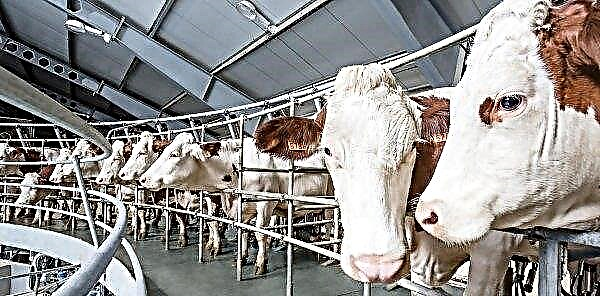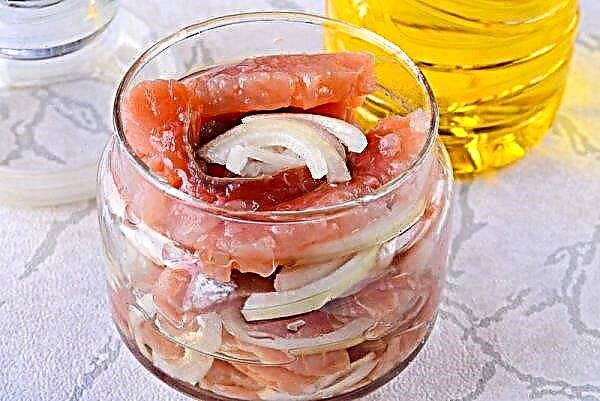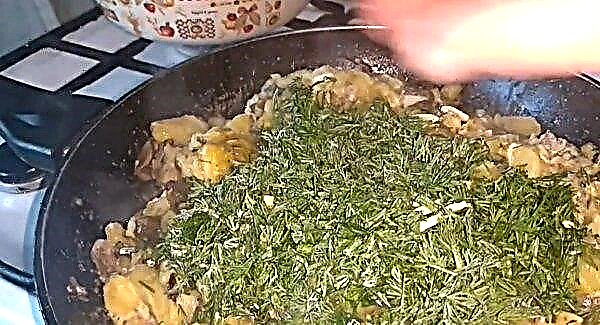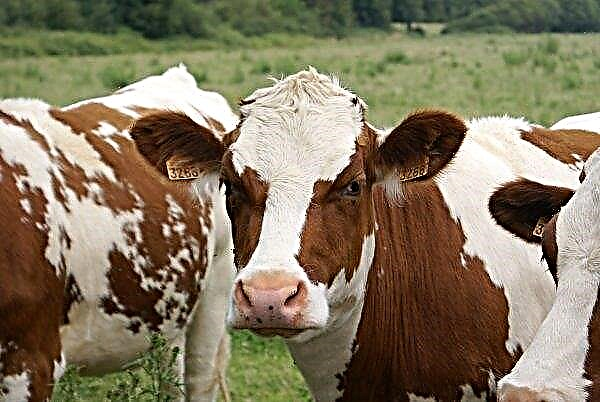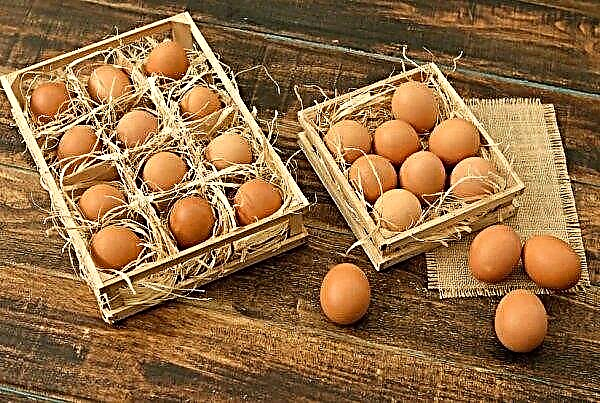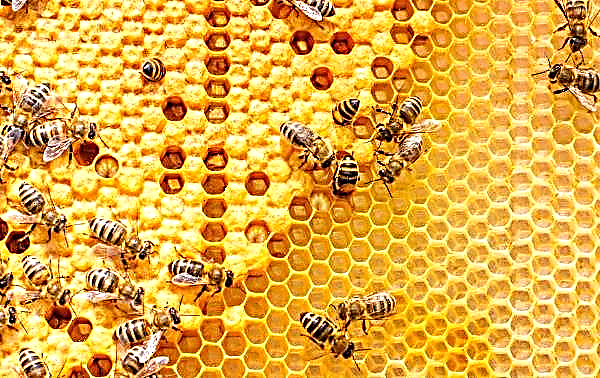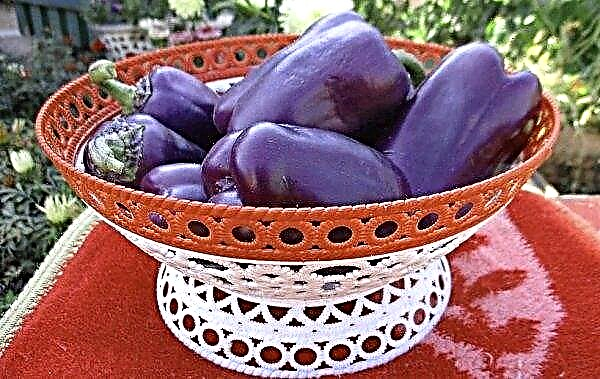When cultivating tomatoes in greenhouse conditions, one of the mandatory procedures is top dressing. The health of plants and their productivity depends on how correctly it is produced. The article contains recommendations for the competent feeding of tomatoes with iodine.
Useful properties of iodine
Iodine is often recommended to be used as top dressing for various plants: vegetable, berry, flower, fruit, grassy. It has a beneficial effect on the growth and development of plant crops, crop quality, and increased immunity. In addition, it is an antiseptic that destroys bacteria, fungi and other microorganisms that cause various diseases.

In particular, the iodine solution effectively prevents the development of dangerous diseases such as late blight, powdery mildew, rot of roots, fruits and ovaries, keels, mildews, oidium. It is used to water plants and to disinfect seeds before sowing.
Did you know? The largest fruit in the world came from a tomato bush grown by US farmer Dan McCoy. Its weight is 3.8 kg. The giant tomato even got its own name - Big Zack.
Is it possible and for what it is necessary to water tomatoes with iodine?
In order to eat beautiful, juicy and tasty tomatoes grown by your own hands in a greenhouse, you need to regularly feed them throughout the growing season. And do it by the rules, so as not to ruin the crop. One of the substances that is recommended for feeding is iodine.

- When used correctly, it is able to exert such positive effects:
- contribute to an increase in yield;
- improve the taste of fruits;
- give the skin of tomatoes an appetizing color;
- lead to an increase in the size of the fruit;
- increase the resistance of plants to late blight and other diseases;
- to influence the best assimilation of nitrogen when feeding;
- contribute to strong seedlings.
Did you know? There is no unanimous opinion on whether a tomato is a vegetable, berry or fruit crop. In botany, it is called a berry. Technological systematics considers it a vegetable crop. In normative acts adopted in countries belonging to the European Union, tomato is a fruit.
Signs of tomato iodine deficiency
The fact that the soil lacks the above element, tomato bushes will show their appearance.
The main features are:
- pallor and wilting of leaves;
- thinning of stems;
- spotting on ground organs;
- the development of fungal diseases;
- the formation of a small number of ovaries;
- the appearance of fruits with a faded skin;
- growth and development retardation.

Features of the preparation of the solution
The solution can be prepared by diluting iodine in water, or in other substances, such as serum.
To prepare a standard aqueous solution, you should adhere to the dosage, which is recommended at different stages of plant development:
- after the formation of seedlings of 2-3 leaves - 1 drop in 3 liters of water;
- 1.5–2 weeks after moving the sprouts into the greenhouse and before flowering - 3 drops per bucket of water in the irrigation mode;
- for feeding mature tomato bushes - 20 drops / 10 l of water with the addition of 1 l of serum.
For the treatment of late blight, the solution is prepared from the following components: iodine (40 drops), water (10 l), hydrogen peroxide (1 tbsp), serum (1 l). For lack of serum, a mixture is prepared from nonfat milk (1 l), water (10 l), iodine (20 drops).
Fertilizing and watering tomatoes
The most effective is the alternation of watering under the root and spraying on the foliage. The introduction of iodine can be done from the early stages of development of tomato bushes - seedling growth - until the formation of the fruit.
Root dressing
Watering with iodine solution of seedlings before it is transplanted into the soil is done 1 time. 50 ml are consumed per 1 sprout.

To determine how often to add iodine top dressing, you must use the following recommendations:
- After planting in a greenhouse, young plants are also watered 1 time. Under 1 bush, it is recommended to use 0.5 l of solution. Before flowering, the volume of the mixture for 1 plant is increased to 0.7–1 l.
- Watering of adult bushes is carried out at intervals of 7 days. Fluid flow rate - 1 liter under 1 bush.
- Top dressing with the addition of serum is done 1-2 times.
Important! 2 hours after moistening the soil, the greenhouse should be aired to avoid a strong increase in humidity and the risk of developing fungal diseases.
Foliar top dressing
Foliar top dressing is introduced by spraying the plant's ground organs. The procedure should be planned for the morning hours. During the season, you can spend 2-3 foliar sprayings. The solution should be tried to distribute evenly.

To prevent the development of late blight, a mixture with the addition of whey or milk is sprayed every 14 days. Both root and foliar top dressing should be done only in moist soil. If iodine is introduced into dry soil, it can burn the root system of the plant.
It is best to arrange drip irrigation in the greenhouse. For irrigation and for adding to iodine solution, you need to use warm water, heated to a temperature of +18 ... + 20 ° С.
Use of iodine mixed with other substances
In order to fertilize tomatoes in a greenhouse, you can use not only iodine with water, whey or milk, but also with other substances.

Effective are solutions consisting of such components:
- hot water (5 l) + wood ash (250 g), after insisting for 1 hour + iodine (5 ml) + boric acid (10 g) + water (10 l). To prepare the working solution, take 1 liter of the mixture and dilute in 10 liters of water. Use it during the fruiting period;
- iodine (5 drops) + zelenka (20 drops) + water (5 l). The solution is used for foliar application. Recommended spraying frequency for the prevention of fungal diseases - 1 time in 2 weeks;
Important! When preparing an iodine solution, it is forbidden to increase the amount of iodine, since this can lead to burns of the plant.
Precautionary measures
It is important not to overdo it, but to use iodine top dressing only with the frequency that is recommended. Too frequent feeding threatens with deformation of the hands and fruits.
Evaporation iodine can be toxic to humans, therefore when working with it, special precautions should be observed: spray it only with open windows and doors in the greenhouse, protecting the body with a protective suit, hands with gloves, airways with a mask, and eyes with special glasses.

Important! If the substance comes into contact with the skin or eyes, rinse thoroughly with clean running water. In case of redness of the eyes or skin, seek medical attention.
Thus, iodine is an effective tool that can improve the growth and development of tomatoes in the greenhouse and prevent the development of fungal diseases. However, it must be used wisely and only if necessary. It is important to properly prepare the solution, adhere to recommendations for its consumption and observe safety precautions.

